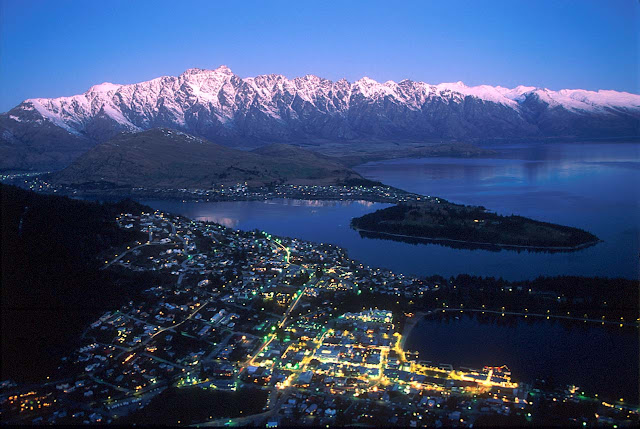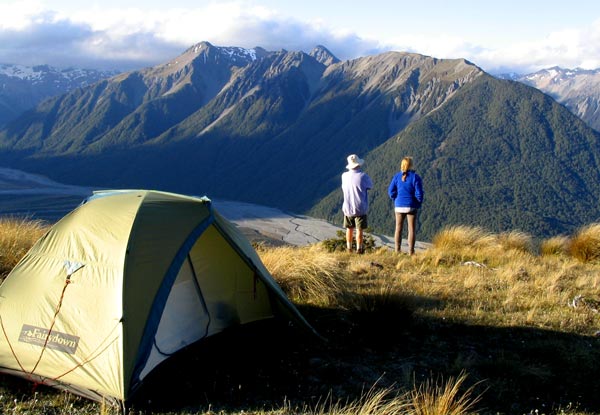| |
New Zealand, The Real Heaven on Earth. |
|
Somebody says if there is any heaven on earth, this is New Zealand. |
| |




 |
| |
New Zealand History:
History of New Zealand, the Youngest Country-
New Zealand is the youngest country on earth - the last major landmass to be discovered. It has a rich and fascinating history, reflecting both our Maori and European heritage. Amazing Maori historic sites and taonga (treasures), some dating back almost a thousand years, are a contrast to many beautiful colonial buildings. A walk around any New Zealand city today shows what a culturally diverse and fascinating country we have become.
New Zealand’s Founding Document
Signed in 1840, the Treaty of Waitangi is an agreement between the British Crown and Maori. It established British law in New Zealand, while at the same time guaranteeing Maori authority over their land and culture. The Treaty is considered New Zealand’s founding document.
|
| |
 |
| |
New Zealand, the Youngest Country:
Legend has it that New Zealand was fished from the sea. Fact has it that New Zealand was the last land mass on earth to be discovered, making New Zealand the youngest country on earth.
Nation of Migrants
The first New Zealanders, the Maori, migrated here from their ancestral Polynesian homeland of Hawaiki. This was followed about 800 years later by extensive European migration. The influence of Pacific Island and Asian immigrants during the 20th century has helped shape New Zealand into an even more vibrant and diverse multicultural society.
|
| |
 |
| |
European Migration
Abel Tasman became the first European to sight New Zealand, but it was after Captain James Cook began his circumnavigation of the country in 1769 that European migration began. The first European migrants were whalers and missionaries.
Natural Environment
With vast open spaces filled with stunning rugged landscapes, gorgeous beaches, often spectacular geothermal and volcanic activity, a temperate climate and fascinating animal and plant life, and it is no surprise that New Zealand’s pure natural environment is so attractive to visitors from other countries. And the great advantage of New Zealand is there are many different landscapes, environments, and ecosystems so close to each other.
|
| |
Climate - Land of the Long White Cloud
Since the Maori people named New Zealand ‘Land of the Long White Cloud’, climate has been of paramount importance to the people of New Zealand — many of whom make their living from the land. New Zealand has mild temperatures, moderately high rainfall, and many hours of sunshine throughout most of the country. Its climate is dominated by two main geographical features — the mountains and the sea.
Hello Sunshine
Most places in New Zealand receive over 2000 hours of sunshine a year, with the sunniest areas — Bay of Plenty, Hawke's Bay and Nelson/Marlborough — receiving over 2350 hours. As New Zealand observes daylight saving, during summer months daylight can last up until 9.00pm. New Zealand experiences relatively little air pollution compared to many other countries, which makes the UV rays in our sunlight very strong during the summer months. In order to avoid sunburn, visitors should wear sunscreen, sunglasses, and hats when they are in direct summer sunlight, especially in the heat of the day (11am — 4pm). While summer is sunnier than the other seasons, most regions in New Zealand have a relatively high proportion of sunlight during the winter months.
Temperature
New Zealand has a largely temperate climate. While the far north has subtropical weather during summer, and inland alpine areas of the South Island can be as cold as —10°C in winter, most of the country lies close to the coast, which means mild temperatures, moderate rainfall, and abundant sunshine.
Because New Zealand lies in the Southern Hemisphere, the average temperature decreases as you travel south. The far north of the country has an average temperature of about 15°C, while the Deep South has a cooler 9°C average. January and February are the warmest months of the year, and July is the coldest.
|
| |
Summer
New Zealand’s summer months are December to February, bringing high temperatures and sunshine. Days are long and sunny, nights are mild. Summer is an excellent time for walking in the bush and a variety of other outdoor activities. New Zealand’s many gorgeous beaches are ideal for swimming, sunbathing, surfing, boating, and water sports during summer. |
| |


|
| |
Winter
New Zealand’s winter months of June to August bring colder weather to much of the country, and more rain to most areas in the North Island. Mountain ranges in both islands become snow-covered, providing beautiful vistas and excellent skiing. While the South Island has cooler winter temperatures, some areas of the island experience little rainfall in winter, so this is an excellent time to visit glaciers, mountains, and other areas of scenic beauty.
|
| |


 |
| |
Autumn
March to May is New Zealand’s autumn months. While temperatures are a little cooler than summer, the weather can be excellent, and it is possible to swim in some places until April. While New Zealand’s native flora is evergreen, there are many introduced deciduous trees. Colourful changing leaves make autumn a scenic delight, especially in regions such as Central Otago and Hawke’s Bay, which are known for their autumn splendour.
|
| |

|
| |
Spring
Spring lasts from September to November, and New Zealand’s spring weather can range from cold and frosty to warm and hot. During spring buds, blossoms, and other new growth bursts forth throughout the country and new born lambs frolic in the fields just before dusk.
Both Alexandra in Central Otago and Hastings in Hawke’s Bay celebrate spring with a blossom festival. If you’re into white water rafting, this is the time when melting spring snow makes river water levels excitingly high! |
| |

|
| |
| Mountains. |
| |


 |
| |
| New Zealand’s Southern Alps have a number of glaciers, the largest being Tasman glacier, which you can view by taking a short walk from Mount Cook village. New Zealand’s most famous glaciers are the Franz Josef and Fox on the South Island’s West Coast. Gouged out by moving ice over thousands of years, these spectacular glaciers are easily accessible to mountaineers and hikers. You can walk up to the glaciers or do a heli-hike — fly up by helicopter and walk.
|
| |
Islands
Shrouded in forest or speckled with farms and holiday homes, islands have a special charm that kicks in the moment you step ashore.
Not counting the North and South Islands, our largest island is Rakiura - known to most as Stewart Island. This southern paradise is home to our newest national park. It’s a place for hiking, bird watching and star gazing.
Other islands devoted to the protection of wildlife include Kapiti north of Wellington and Tiritiri Matangi in the Hauraki Gulf.
|
| |


|
| |
From Auckland city, you can catch ferries to populated islands such as Waiheke and Great Barrier. Waiheke is a picturesque blend of farmland, forest, beaches, vineyards and olive groves. Great Barrier has the kind of rugged, untouched beauty that appeals to adventurers.
Further north you can discover the Bay of Islands, a large area of offshore islands between Cape Brett and the Purerua Peninsula. Charter a boat, hire a kayak or catch a cruise to enjoy this spectacular maritime playground.
|
| |

|
| |
| New Zealand's Currency
|


|
| |
Accommodation
Holiday Home Accommodation
The tradition of a second home by the sea, river, forest or lake is strong in New Zealand. In the North Island the local word for holiday home is ‘bach’ (pronounced ‘batch’); in the South Island they say ‘crib’.
Renting a privately-owned holiday home is a great way to be self-sufficient and get into the Kiwi way of life. No two homes are the same, so you’re getting accommodation with character as well as comfort. And compared to a hotel or motel, you’ll probably have a lot more living space to enjoy.
Holiday homes range from simple cottages by the sea to luxurious lodges in the mountains. Some were probably built by their owners; others are architect-designed palaces.
From a vineyard cottage in Central Otago to a beachfront villa in the far north, our holiday home listings include some of New Zealand’s most idyllic locations. Browse carefully to get the location and level of comfort you want.
|

|
| |
Holiday Parks
Holiday parks are equipped to please a wide range of people for a minimal cost. Within an attractive landscaped setting (often beside a beach or lake) they provide sites for tents, caravans and campervans. Many parks also have simple cabins, self-contained motel units and backpackers' lodges. The casual living style helps to create a friendly atmosphere.
If you're setting up camp or parking a motorhome, you can choose a powered or non-powered site. Easy access to a shared kitchen and bathroom facilities is always part of the deal. Often you'll also have the use of a dining area and a comfortable TV lounge. Motel units and backpackers' lodges generally have self-contained kitchen and bathroom facilities.
Families are attracted to holiday parks that have play areas, heated swimming pools, trampolines and barbecues. Bicycles, canoes and boats can sometimes be hired.
One of New Zealand's more unique holiday parks, and a winner at the 2008 Tourism Awards, is Katikati Naturist Park. As the name suggests this park is relaxed in more ways than one!
|
| |
Hotels
Hotels in New Zealand come in all shapes, sizes and personalities. You can expect to find top international hotel chains, such as Westin, Accor, Hilton, Hyatt, Rydges and InterContinental.
You'll also discover smaller hotels that are memorable for their individuality and in convenient locations on all the main travelling routes. Large international chains are mostly found in the major cities - Auckland, Wellington and Christchurch. They're also located in key holiday destinations, such as Rotorua and Queenstown.
Character and boutique hotels, which range from heritage buildings to purpose built facilities in stunning regional locations, vary in price according to their level of luxury. Hosts are welcoming and provide insight into the local culture and attractions.
Medium-price hotel groups provide a consistent level of quality and a high standard of facilities. These hotels will provide a range of facilities which will generally include restaurants/cafes, bars, gyms, and services including valet car parking. Look for names like, Mainstay, Kingsgate, Flag Inns, and Scenic Circle Hotels.
|
| |
Motel Accommodation
New Zealand motels offer clean and cosy, superior accommodation with all the comforts of home.
Motels usually have one or two bedrooms, lounge, bathroom and a fully equipped kitchen. They are ideal if you prefer to cook your own meals.
You will find motels everywhere. Larger motels often have facilities similar to hotels - swimming pool, spa, sauna, in-house video, laundry facilities, room service, breakfast, restaurant and so on. Most motels are quality rated under the Qualmark standard, so look for the star indicators.
|
| |
|
|
|
|